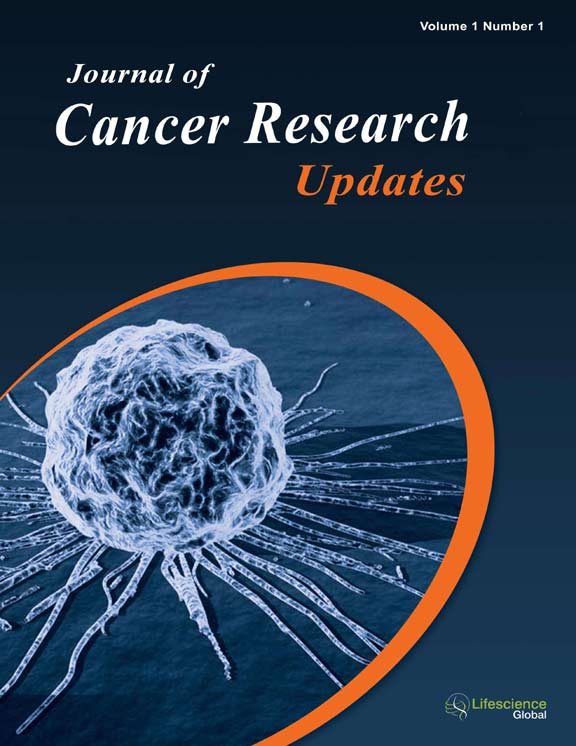jcru
|
|
Abstract: Photodynamic therapy (PDT has been widely used in many medical applications. PDT for anti-cancer is one of the clinically important subjects. This study will analyze the photochemical kinetics and the efficacy of anti-cancer via the critical factors including: the concentrations of photosensitizers and oxygen in the treated target, the exposure time, intensity and does (energy) of the light applied to the target. To achieve high efficacy, one requires the oxygen source term to re-supply the depletion of oxygen and photosensitizers. Higher light intensity has faster rising curve of the efficacy, but it reaches the same steady-state value as that of low intensity. The efficacy follows the Bunsen-Roscoe law (BRL) of reciprocity only when there is no oxygen source term. Higher initial concentration of oxygen and photosensitizers, C0, always provide higher efficacy. To achieve the same efficacy, minimum dose and/or less exposure time for accelerated procedure may be achieved by using a higher intensity (but same dose) for the case of P=0. However, with P>0, higher intensity requires a higher fluence to achieve the same efficacy and it does not follow the BRL reciprocity law. Keywords: Photodynamic therapy, Cancer therapy, Photosensitizers, Reactive oxygen species, Cell viability, Threshold dose, Modeling. Download Full Article |
|
|
Abstract: Hepatocellular carcinoma (HCC) ranks as the third leading cause of cancer death. Attempts to induce an effective immune response against cancer by immunotherapeutic intervention, including activation of dendritic cells (DCs), were established. The present study was undertaken to investigate the attenuation of HepG2 cells using ribonuclease enzyme A (RNase A) as a possible biological factor to sensitize allogenic DCs and lymphocytes isolated from Egyptian HCC patients. Attenuation of HepG2 cells resulted in a significant increase in activated DC and T-lymphocyte markers, upregulation of CD44 gene expression and increased lactate dehydrogenase as well as interleukin-12 levels. In contrast, a significant decrease in mature DCs, B-cells, T-helper, cytotoxic T-cells, and NK-cells, as well as LMP-2 gene expression was recorded. In conclusion, the attenuation of HepG2 cells with RNase A and subsequent pulsation to allogenic DCs and lymphocytes caused a differential immune response. Further studies are recommended to explain the role of RNase A in modulating antigen expression on the tumor cell surface. Keywords: Antigen presentation, dendritic cells, HepG2, immunotherapy, ribonuclease A. |
|
|
Abstract: Introduction: The high mortality rate of prostate cancer in Cameroon, its high incidence, its prevalence, the lack of epidemiological data for the north which for the case is the poorest area of the country led us to conduct this study with for the purpose of presenting the epidemiological, clinical and para-clinical aspects, the cost and means of management with a view to setting up adequate management policies. Patients and Methods: We conducted a cross-sectional analytical study in the city of Ngaoundéré for a period of 5 months. The data were obtained after a survey of patients and collection of results from the pathology registry of the Islamic clinic of Adamawa three months before the start of our study. Results: The prevalence and incidence of prostate cancer were 28.7% and 24.32%, respectively. The average age of prostate cancer patients was 66.5 years. Gleason scores were less than 6 in 44.44% of cases. Risk factors related to familial cancer cases were difficult to determine. The symptoms were dominated in patients by urinary retention associated with polyuria, dysuria and pollakiuria. The means and costs of care were scalable depending on the difficulty of achieving the technique. Conclusion: Prostate cancer remains a real health problem in the north because of its incidence and high prevalence and requires the implementation of a government policy of care. Keywords: Cancer, prostate, Cameroon, epidemiology. Download Full Article |
|
|
Abstract: Chondrosarcoma is a rare malignant tumour arising from the cartilage with a high variability in the clinical course and overall prognosis. This entity has, generally, a predilection for long bones of the limbs and pelvis and the location in the cranial bones is quite rare. We report a case of a 38 year male with a large and poorly symptomatic parafalcine chondrosarcoma of the cranial vault which was removed en bloc. The described location is extremely rare. Magnetic Resonance Imaging permitted to better delineate the lesion and plan the most appropriate therapeutic approach. Final diagnosis was based on histological examination, which confirmed the hypothesis of low-grade parafalcine chondrosarcoma. Even though surgery remains the mainstay of treatment for cerebral chondrosarcomas, adjuvant radiotherapy such as stereotactic, proton beam or carbon ion-beam therapy might be necessary in aggressive or incomplete removed cases. Keywords: Chondrosarcoma, Computed Tomography, Magnetic Resonance Imaging, skull base, malignant tumor, adjuvant radiotherapy. |
|
|
Abstract: Chronic myeloid leukemia (CML) is a myeloproliferative disorder of hematopoietic stem cells. Identifying the leading mutation in BCR-ABL that causes CML made it possible to develop a targeted approach against this vastly disseminating disease. The active tyrosine kinase protein of BCR-ABL was effectively blocked with an identified tyrosine kinase inhibitor (TKI), imatinib. Imatinib became the first targeted therapy licensed for patients with chronic-phase CML and its introduction was associated with substantial improvements in response and survival compared with previous therapies. However, drug resistance towards imatinib therapy soon emerged and hence limited the complete eradication of CML in patients receiving imatinib. This is primarily due to the mutations within the ABL kinase domain, and to a lesser degree, due to residual disease after treatment. Nilotinib and dasatinib were soon introduced and showed improved clinical outcomes in patients intolerant and resistant to imatinib treatment. However, the T315I mutant overcame these agents along with imatinib, rendering the treatment ineffective. Exploring the kinase domain of the BCR-ABL protein and identifying key components involved in the signal transduction pathways is crucial towards understanding the disease and developing better strategic approaches towards combating it. In this review, we broadly discuss the current treatment options available against Philadelphia chromosome (Ph) positive BCR-ABL CML. Keywords: BCR-ABL, tyrosine kinase, imatinib, nilotinib, dasatinib. Download Full Article |


